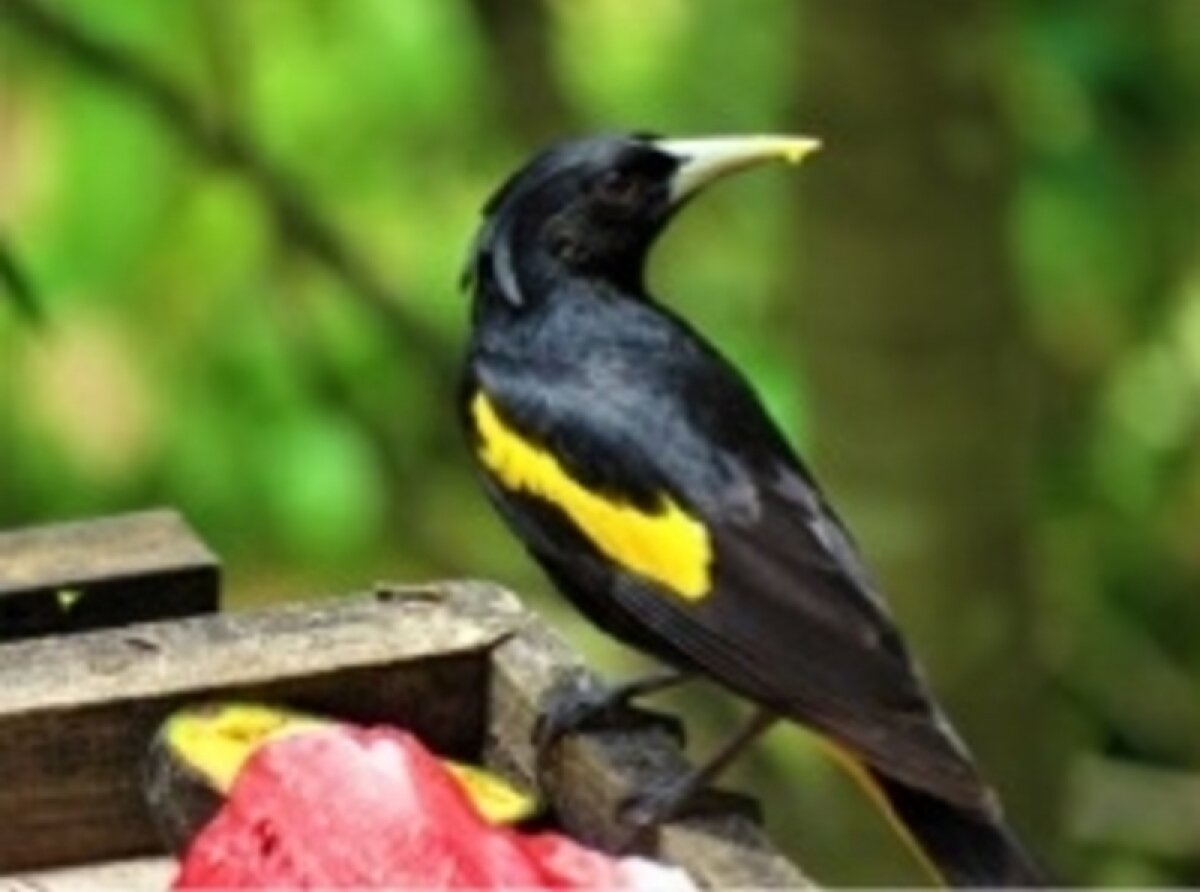Yellow Winged Cacique
I have never been an avid birdwatcher, I have always considered myself a rockhound and am usually looking down.
But since my family moved to a home in the hills above Puerto Vallarta, I can hardly not notice the beautiful and interesting array of tropical birds right in my own backyard! I now live high in the hills exactly on the line of where city meets jungle, where there are large trees and unpopulated areas. Every day is like a nature show of sights and sounds of tropical birds.
We moved here mid-winter, and the first bird I saw was the West Mexican Chachalaca. Not the most colorful bird, in fact rather dull, but impressively large if you haven’t seen one before. It was amusing to see birds larger than chickens hanging out in the tops of tall trees.
Right away I noticed the yellow and brown Great Kiskadee, a bird we have seen everywhere we have lived in Puerto Vallarta, as well as the Inca Dove. You have probably seen at least a picture of the woven teardrop shaped nests that hang from trees in this area. These are made by the Yellow Winged Cacique, a strikingly contrasting jet black and bright yellow bird with a jay-like tail.

Elegant Trogon
If you have ventured up into the jungle you have probably seen, or shall I say heard as they are quite noisy, flocks of little green parrots, the Mexican Parrotlet. Another bird that looks a lot like a small parrot is the Elegant Trogon. This beautiful and colorful bird is green with a bright red chest, and makes a peculiar recurring sound that I would describe as between a squawk and a quack.
With the coming of spring a Hooded Oriole came knocking at my window every morning, trying to find the bird on the other side of the mirrored glass. He is mostly bright orange with brown wings and a black mask. His partner is more of a yellow color. I got a flyover by a Russet Crowned Motmot, identified by his unique sculpted tail like an exclamation mark with a dot! One day we walked up the hill a bit further and saw a black and blue San Blas Jay and an orange-bellied American Redstart.
Several types of hummingbirds frequent my feeder. I have the Broadbilled hummer, Plain Capped Starthroat, Golden Crowned Emerald, and my favorite, the Cinnamon Hummingbird. This one is a golden orange color with a bright orange beak. The Starthroats are huge, the biggest hummers I have ever seen. They only use one side of the feeder, as the other has less space between it and the rafters, all the other hummers use both sides.

Lineated Woodpecker
We have two types of woodpeckers. The Golden Cheeked Woodpecker is a small, round, unsuspecting bird that kind of reminds me of a quail until you hear him tap-tap-tapping. The Lineated Woodpecker is a larger and more obvious Mexican version of Woody Woodpecker.
I occasionally hear some who-who-whooing at night and assume this to be the Colima Pygmy Owl. Not long ago the green police rescued one nearby. I have briefly seen a small bird dressed in all the colors of the rainbow and believe that may have been a Painted Bunting. And we have a pair of Black Bellied Whistling Ducks that fly by at dawn and dusk, occasionally landing on our roof. Sometimes they will sit in a palm tree for a while. They are called Whistling, but they sound more like machinery that needs to be oiled.

Sinaloa Wren
The most beautiful bird of all actually is not so sightly. The Sinaloa Wren is a little brownish-greyish bird that is about the size and shape of a finch, but with a longer beak. You would probably never even notice him until he started singing, and then you would be captivated. He sings like a canary except with more sound variations. He starts off with a three tone introduction that is always the same, and then follows with a variety of birdie melodies. If you mimic him, he will sing back to you a more and more complex song that gets longer and more varied each time. He eventually graduates into sounds I cannot imitate, and songs so long and varied that I fail to remember the sequence.

